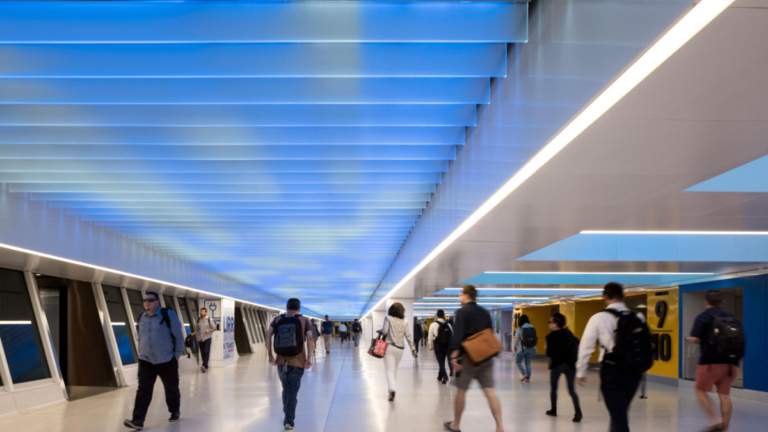We are a leading manufacturer of quality internal and external lighting products for commercial, industrial and retail applications.
View all productsAt Ansell Lighting we design and manufacture an extensive range of luminaires for a diverse number of sectors and applications. Whatever the shape, purpose or style of your space, we have a lighting solution.
View all sectors & applicationsWe are a leading manufacturer of quality internal and external lighting products for commercial, industrial and retail applications.
Welcome to Ansell lightingWe are here to answer any questions you may have, help you find a stockist or speak to a local member of our team.
OCTO delivers the complete smart lighting package to transform the efficiency and ambience of commercial and residential spaces.
Find information regarding our product warranty, product data downloads and FAQs regarding lighting and technical terms. Here you will find support with training CPDs as well as useful lighting design and LED strip calculators.
Lighting controls and building regulations

Some months back during the earlier part of this year, two separate editorials were added to the Ansell website informing readers of the release of the latest version of the Building Regulations 2010 for use in England, being the Approved Document L on the Conservation of Fuel and Power, with Volume 1 for Dwellings and Volume 2 for Buildings other than dwellings, which were published on the 15th of December 2021, and which took effect on the 15th of June 2022 for use in England.

It was stated that the requirements related to fixed building services energy efficiency and controls, stating that reasonable provision shall be made for the conservation of fuel and power in buildings by providing fixed building services which are energy efficient to a reasonable standard, have effective controls and are commissioned by testing and adjustment to ensure they use no more fuel and power than is reasonable in the circumstances.
For dwellings, fixed lighting should achieve lighting levels appropriate to the activity, with spaces and spaces not being over-illuminated, where for each internal light fitting installed into a new or existing dwelling, lamps should now have a minimum luminous efficacy of 75 light source lumens per circuit-watt, an increase over that of previous documents. This latest version introduces requirements, where internal lighting should have local controls to allow for the separate control of lighting in each space or zone, with controls being either manual, automatic or a combination of both. Unfortunately for many households, the internal lighting is still operated through the use of wall switches, which are manually controlled allowing no variance of illumination level for the space, and while local manual control is still compliant, the use of an automated control system provides the benefit of providing illumination locally only when needed and at the level required to carry out specific tasks. This offers great flexibility in the operation of the internal lighting, whilst potentially reducing the energy usage and its associated costs.

Externally, whilst the levels of performance have been increased to 75 light source lumens per circuit-watt, the use of automated controls is only a requirement if the efficacy is 75 light source lumens per circuit-watt or less, however if greater, then manual control is acceptable. For significant numbers of residential users, control of their external lighting have been in place for many years, with their lighting being operated through a photocell or by passive infra-red detection, thereby extinguishing the lighting during the hours of natural daylight or when it is not required, however adding the external lighting to the internal lighting control system offers incremental aesthetic benefits, in that of providing a seamless transition from internal spaces to external spaces, thereby allowing the outside to become an extension of the living spaces, whilst also optimising energy usage through illuminating only the areas being used.

For buildings other than dwellings, fixed lighting should achieve levels of illumination appropriate to the activity in the space and should not be over-illuminated, being designed based on the SLL Lighting Handbook or an equivalent design guide, where general lighting should achieve an average luminaire efficacy of 95 luminaire lumens per circuit-watt and for display lighting, an average efficacy of 80 light source lumens per circuit-watt. General lighting and display lighting should be metered, either on dedicated lighting circuits using a kWh meter, or by a lighting management system which calculates the consumed energy and makes this information available to a BMS system.
The use of lighting controls should follow the guidance given, where unoccupied spaces have automatic controls to turn the general lighting off when the space is not in use, and occupied spaces should have automatic controls suitable for the space, during normal usage.
The approved document goes on, that for general lighting in occupied spaces, these should have daylight controls, such as photo-switching and dimming for parts of the space which are likely to receive high levels of natural light, especially important for a multitude of non-domestic spaces, such as office buildings, which generally have good access to natural daylight and where lighting could account for around 40% of the consumed electrical energy.

The benefits of installing a lighting control system or smart lighting system offers the client more than just a saving in electrical energy, however whilst this is deemed most important in these days of high energy costs, this is far from being the only benefit being gained. Whilst the potential reduction in energy cost benefits the client, the saving can be insignificant in the benefits gained from providing optimally lit spaces, which offer the workforce an environment which is illuminated through the use of both natural light, which is cost free, and that of electric lighting. Providing staff with illuminated spaces offering a lighting installation which meets the basic needs, of visual comfort for them to have a feeling of well-being, of visual performance where they can undertake tasks both effectively and efficiently, and of that of offering a safe environment in which they can work.
What does all of this actually mean for the commercial building owner?
Quite simply, it is that providing the right environment for work, having the right light available, whether that be natural daylight, electric based light or a combination of both, in the right place, that of the office, meeting and ancillary spaces, at the right time, being when staff are working or relaxing, can allow them to carry out complicated tasks under difficult circumstances, whilst contributing to higher productivity levels alongside higher quality of work.
Other benefits may include a reduction in staff absenteeism and an increase in staff retention, where an aesthetically pleasing environment makes for an increasing feeling of well-being at work, with the possibility of increased work-based throughput.
Finally, it will allow the lighting installation to be compliant with the new Building Regulations, Part L on energy, and one which offers both energy efficiency and sustainability moving forward.
- The bottom line of this proposal might just be an increased bottom line!
Achieving all this is just a phone call to Ansell Lighting, who will be most happy to discuss the route to compliance, energy efficiency and to enhanced staff well-being, through the installation of the OCTO control system.
